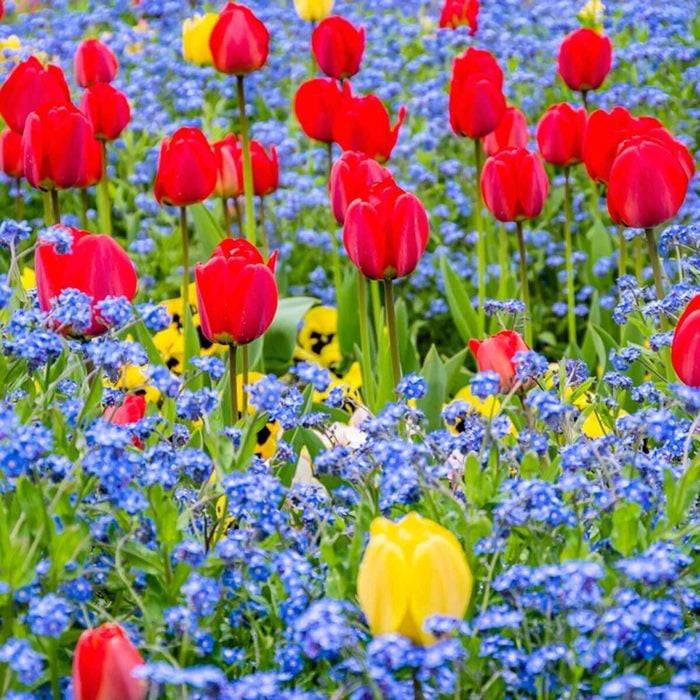
Regal Tulip Flower Bed
Nothing says spring quite like the regal tulip. Trouble is, by themselves, tulips sometimes look a bit stiff and regimented. Underplant them with companions like blue forget-me-nots (Myosotis spp.) and yellow pansies (Viola spp.) to anchor the flowers in the bed.
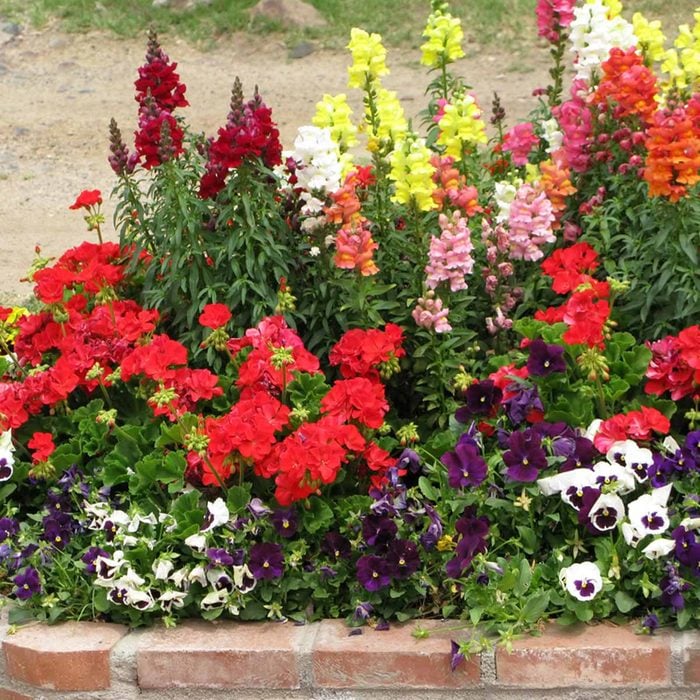
Multicolored Snapdragons Flower Bed
Spring color can also be found with annuals. In this idea, multicolored snapdragons hold court with vibrant red geraniums and a mix of purple and white pansies. The vibrant colors are sure to draw appreciative looks from your neighbors.
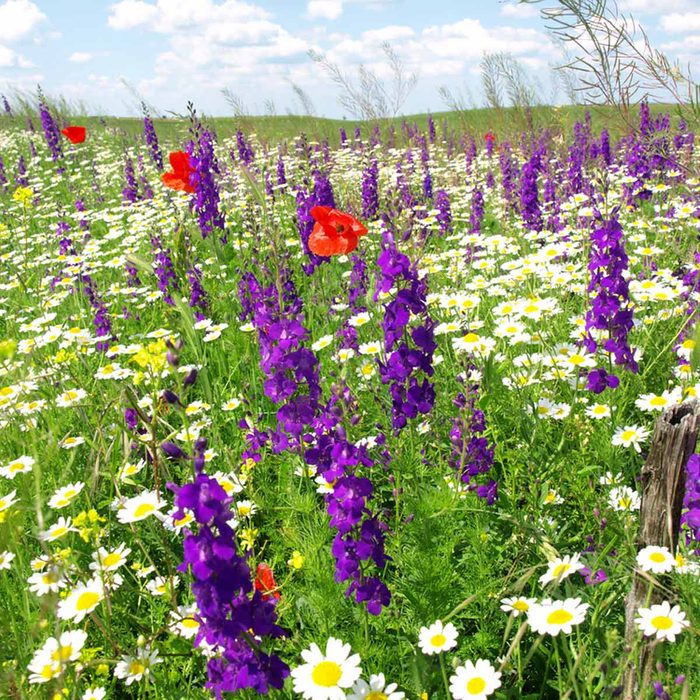
Purple Larkspur Highlights Flower Bed
These purple larkspur (Consolida ajacis) hold sway over red poppies and white daisies, providing a naturalistic wildflower look. Daisies are among the easiest perennials to grow, while larkspur and poppies are rampant self-seeders that will sow a new crop year after year.
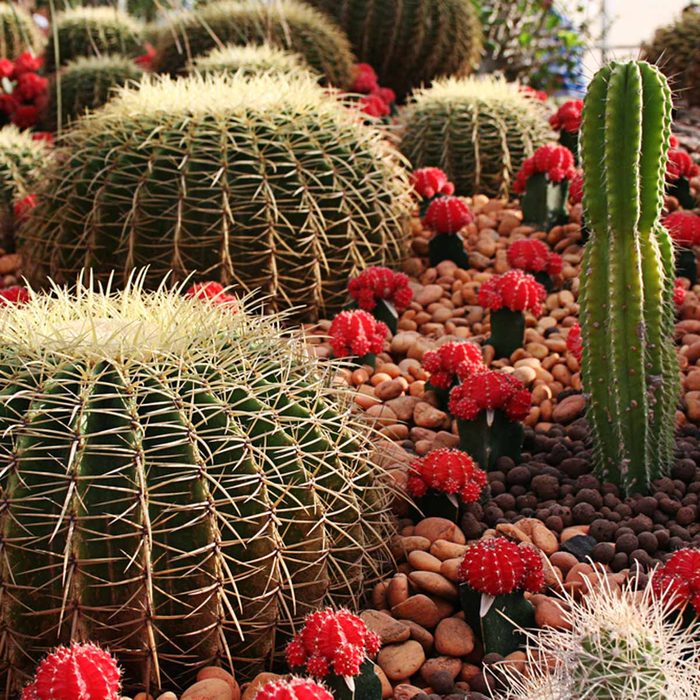
Cacti Diversity Flower Bed
Golden barrel cactus (Echinocactus grusonii) is an intriguing fixture in the desert garden. The size and shape—contrasted by the upright cactus and the fist-sized cacti in bloom—guarantee visual interest. These cacti are also a great choice if you’re looking for drought-tolerant landscaping ideas.
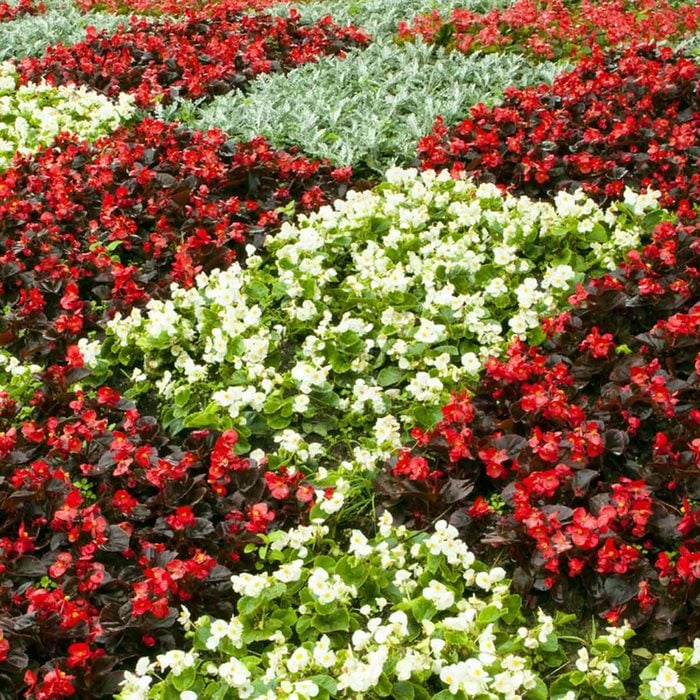
Bright Begonias Flower Bed
Just about 180 degrees in the opposite direction of prickly cacti are these bright and shiny begonias. And what a great use for these pretty annuals. Set them in a checkerboard pattern and instantly create a “55 miles per hour” flower bed—in other words, one that attracts attention even from passing motorists.
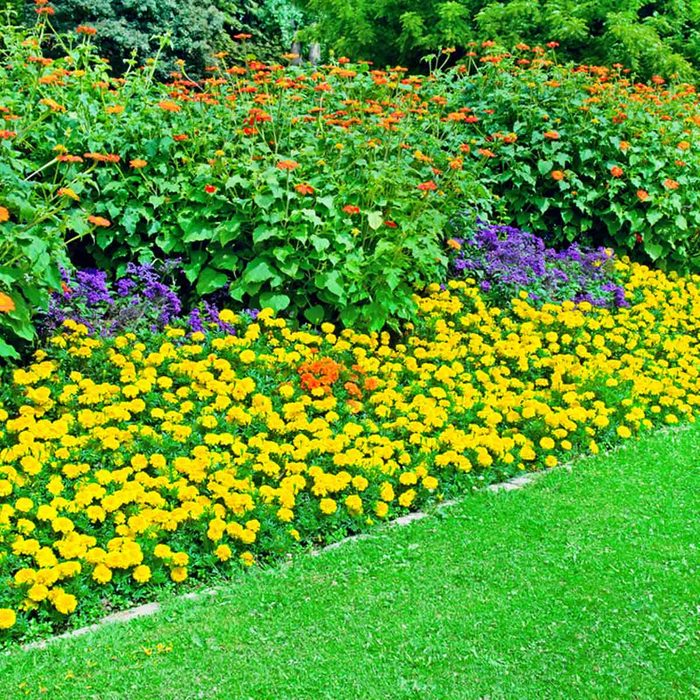
Warm Colors Flower Bed
Orange and yellow are warm colors—full of fun and frolic. They’re in ample supply here, with orange Mexican sunflowers (Tithonia spp.) backing up a river of yellow marigolds. Purple salvia punctuates the scene. All three flowers are pollinator favorites, too. So you’re giving yourself a gorgeous view while supporting important members of the ecosystem!
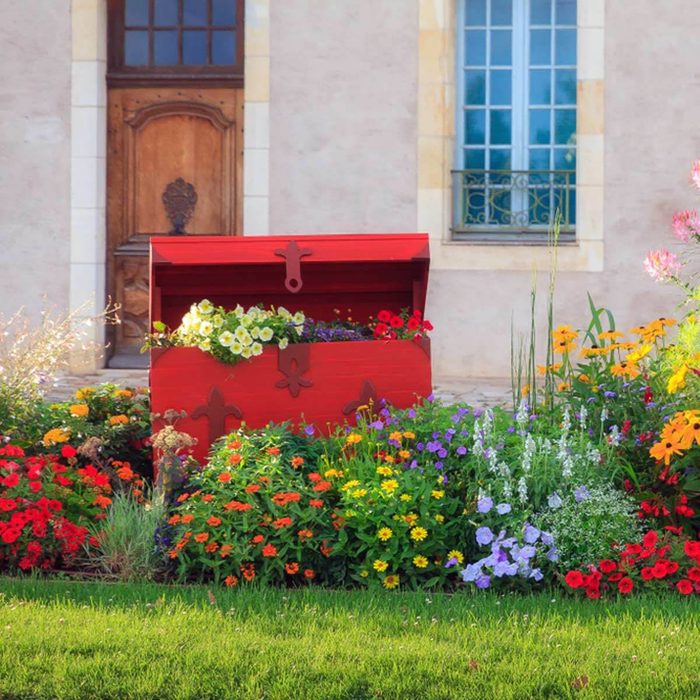
Large Boxes as Centerpieces in Your Flower Bed
A piece of unexpected garden art in the form of a large red box makes its presence felt in garden flower beds. It’s joined by easy-growing annuals calibrachoa, zinnia, salvia, euphorbia, marigold and cleome.
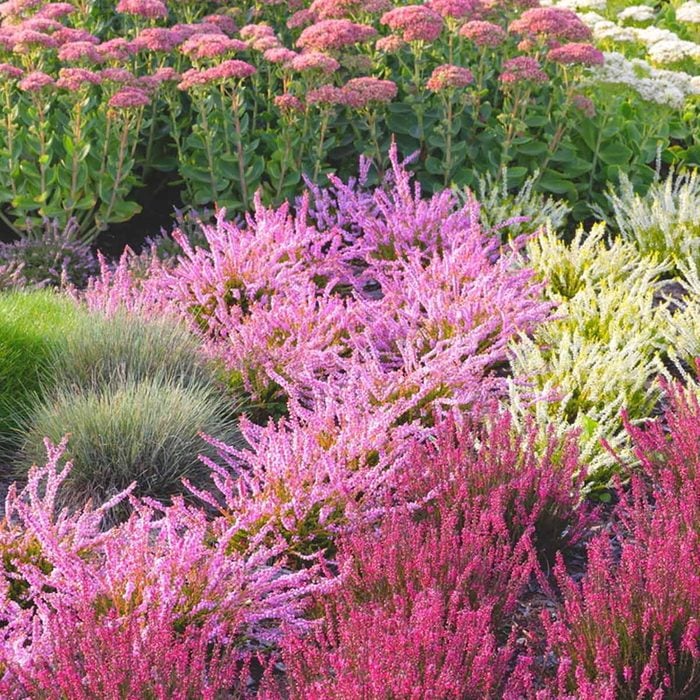
Heather Backdrop Flower Bed
The pink, red and white heathers would make a pretty picture on their own, but they’re set off even more attractively by a backdrop of pink sedum. Meanwhile, blue fescue adds textural contrast as well as a place to rest the eye among all the color.
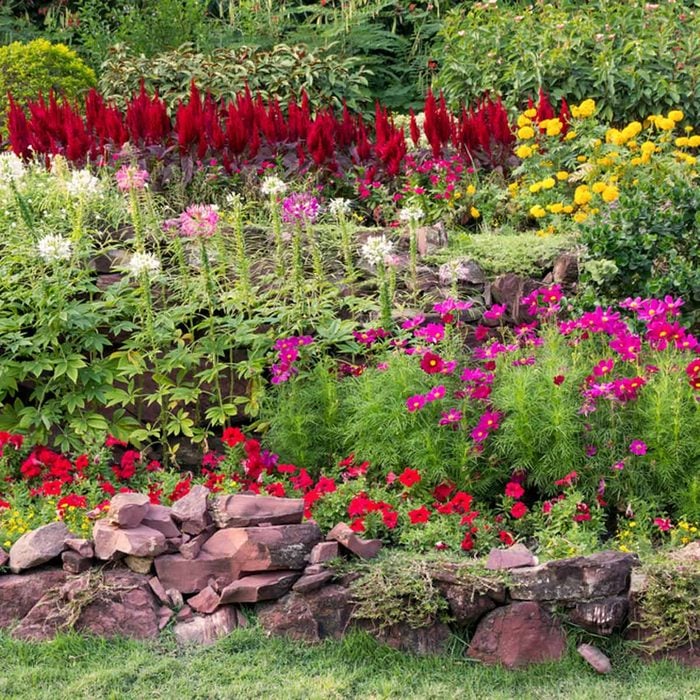
Covering Slopes Flower Bed
When you’ve got a slope, you might as well take advantage of the existing stage by stair-stepping plants. This bed features red petunias, hot-pink cosmos, yellow marigolds, white and pink cleome, and blood-red celosia.
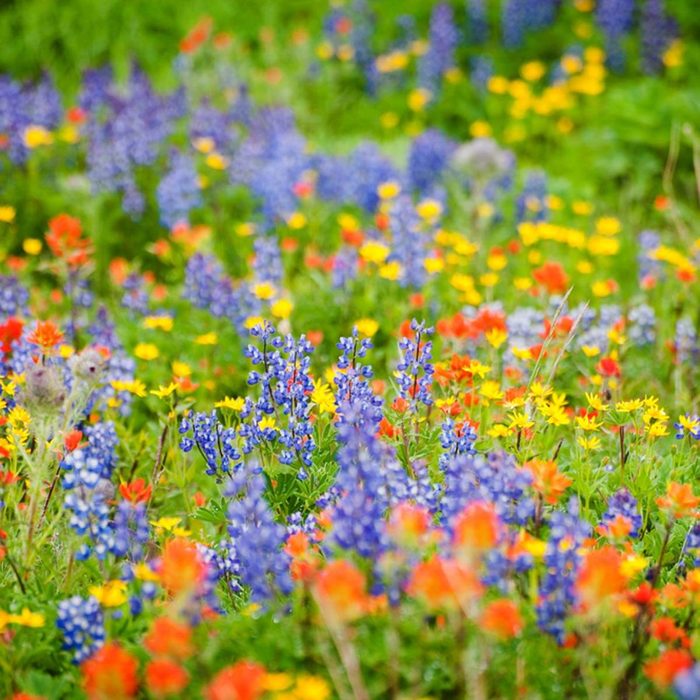
Add Bold Bursts to Your Flower Bed
A terrific burst of color is what you get when you plant a mix of bluebonnet (Lupinus spp.), Indian paintbrush (Castilleja spp.) and yellow aster. How could garden flower beds not look divine with an artful mix of these colors? Adding flower bed stones is a great way to add texture to your landscape, too.
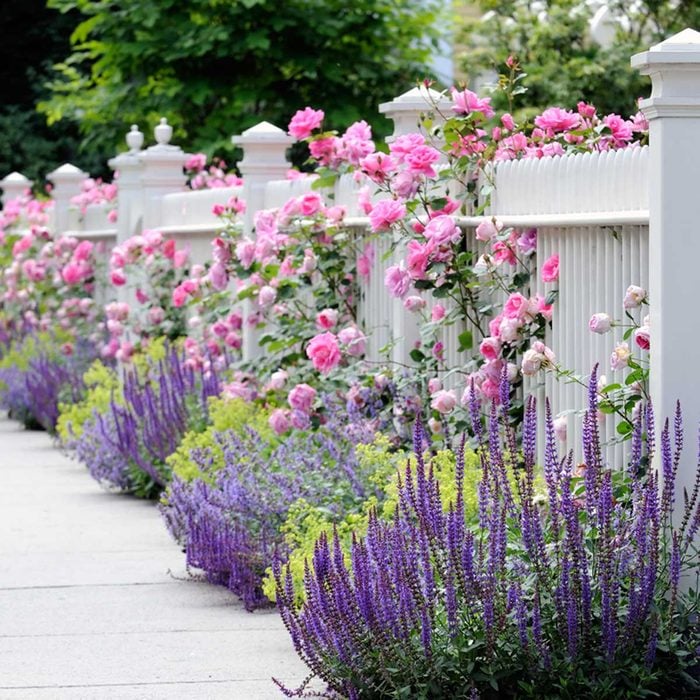
Add Some Pink to Your Flower Bed
Pink roses and white picket fences just naturally go together. Add some perennial purple salvia and chartreuse euphorbia, and you end up with a charming scene worthy of a painting. They’re all perennials so the flowers will come back year after year. Better yet, the roses will scent the walkway with their heavenly fragrance.
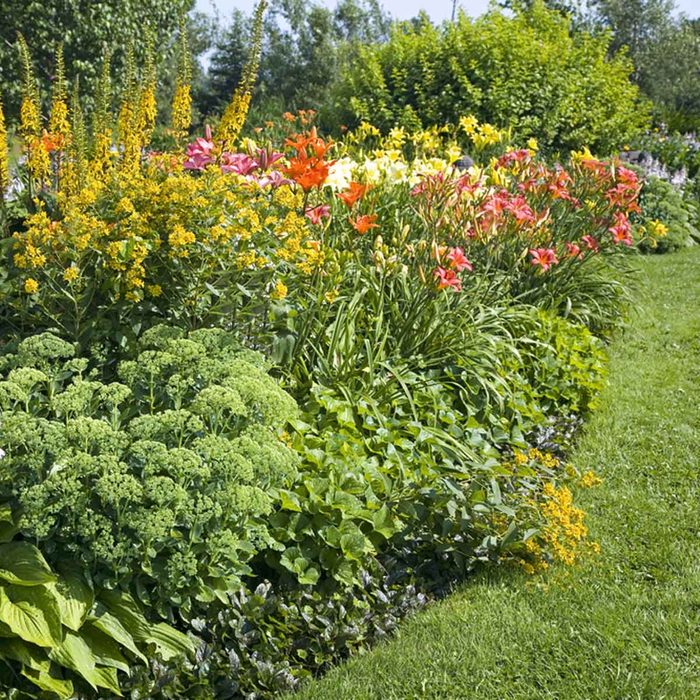
Perennial Winners Flower Bed
And we finish off with another perennial bed, this one with a different color scheme and a less formal bearing. It features hosta, daylilies, sedum, wallflower, ligularia and ajuga. It’s perfect if you want some lovely greenery to balance out the brighter colors.